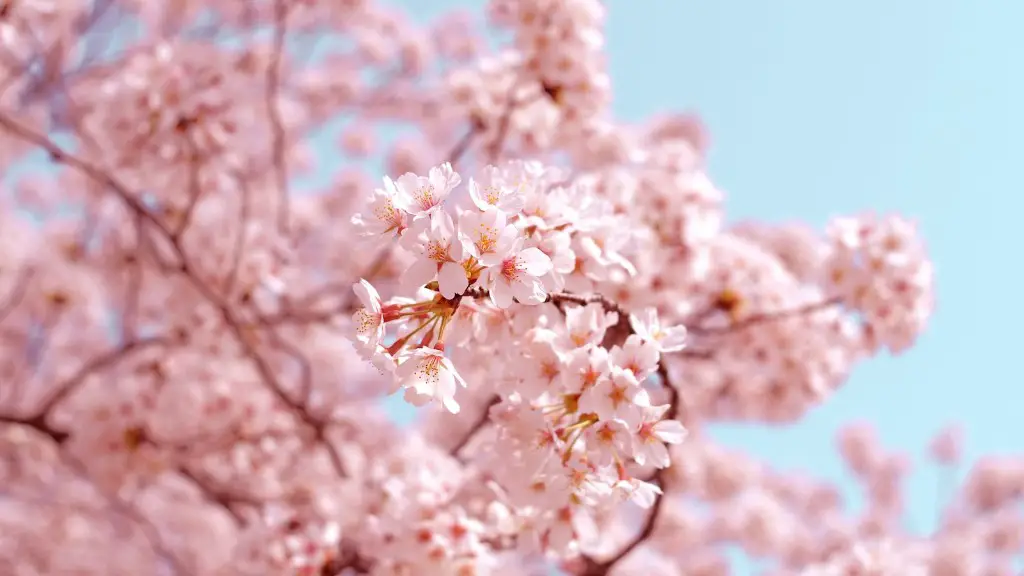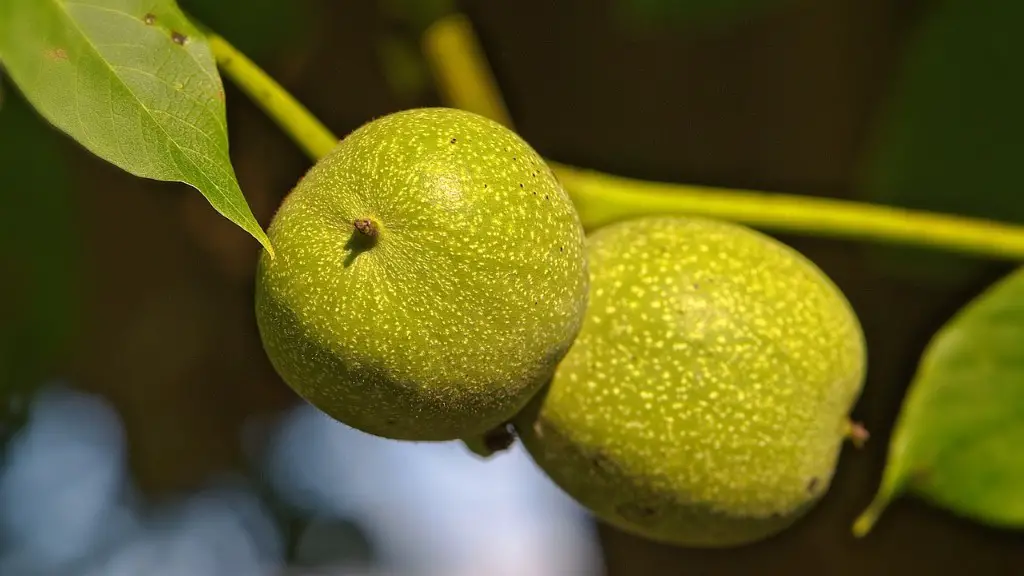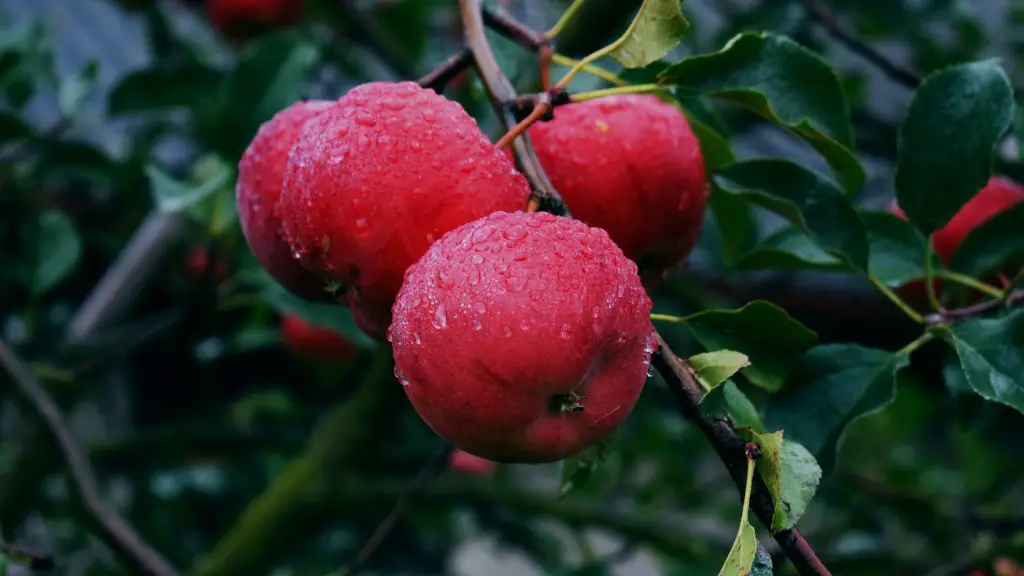The Japanese Cherry Blossom, or Sakura, is a beloved symbol of renewal and beauty, honoring a centuries-long tradition of reverence for the blooming tree. The symbolic significance of these flowers is such that an entire branch of Japanese culture – hanami – is devoted to the flower’s appreciation. If you are lucky enough to be able to cultivate a Japanese Cherry Blossom Tree of your own, growing it from seed can provide you with a special sense of accomplishment and connection with nature.
In order to grow a Japanese Cherry Blossom Tree from seed, you will need Japanese Cherry Blossom seeds, which can be acquired online or from select specialty stores. These seeds should be germinated in small pots or trays, using moist soil and placed in a warm, sunny spot where it can get about 10 hours of direct sunlight a day. Once the seeds sprout, they should be planted in a larger pot of potting soil and positioned on the ground in a sunny area where it can receive adequate drainage.
It is important to note that, unsurprisingly, the Japanese Cherry Blossom is a very delicate flower and tree, and therefore requires special care to ensure its growth and flowering. Firstly, it is necessary to familiarise oneself with the basics of horticulture and gardening for the species. Once the tree has been planted, it is essential to keep an eye on its watering needs – it can be beneficial to water the tree in the morning once a week, and in between watering, mist the leaves with water to promote healthy growth and flowering.
Beyond keeping the blossoms alive and healthy, it is important to ensure the Japanese Cherry Blossom Tree is nurtured and espoused with other growth-supporting conditions. It is important to pay attention to the nutrients and minerals in the soil, as the presence of certain elements can greatly affect the growth of the blossoms. Regular soil tests are advisable to avoid nutrient deficiency in the tree. Additionally, mulching around the trunk is recommended, as it can shield the tree from extreme temperatures, block out weeds, retain moisture and add vital nutrients to the soil.
Finally, whilst it is certainly possible to enjoy the benefit of a blooming Japanese Cherry Blossom Tree from a young age, it is important to bear in mind that the tree takes about three to five years to flower at its peak. Therefore, a considerable amount of patience, consistency and nourishment is required for successful cultivation in order to enjoy a bounteous bloom.
Pruning
Because Japanese Cherry Blossom Trees can reach up to 15 feet or higher in height, they require regular pruning in order to maintain an appropriate shape and even size. Pruning should be done twice a year, in late autumn and early spring, and should consist of gently removing dead or diseased branches, as well as trimming back the canopies of branches to encourage dense flowering in the pattersont. When pruning, it is important to use sharp, disinfected scissors, working around the edges and from branches very low in the tree.
It is important not to prune the center of the tree, as this can reduce flowering. Furthermore, Matsuo Sakamoto, an expert in Japanese Cherry Blossom tree cultivation, notes that discouraging vigorous growth is also key, which can be achieved by using slow-release fertilizers and avoiding over-watering. Finally, no more than 30-40% of the tree should be pruned each time.
Fertilizing
In addition to pruning, fertilizing can have a major impact on the health and vigour of Japanese Cherry Blossom Trees. Accordingly, it is recommended to use a balanced, acidic fertilizer in the growing season from late spring to mid-fall, in order to provide the trees with adequate amounts of nitrogen, potassium, phosphorus and micronutrients. It is important to remember to dilute the fertilizer before applying it to the tree, and to spread the solution in a ring around the tree rather than directly onto the trunk. Additionally, Matsuo Sakamoto recommends fertilizing the trees only when the soil is dry, if necessary.
It can also be beneficial for a particular tree to use a ‘fertilizer bomb’, a mix of fertilizer and water which is poured around the outside of the tree will release nutrients slowly into the soil. The fertilizer bomb is usually only used every two or three years, with regular fertilizing in the form of slow-release forms or liquid once a month.
Soil Care
Finally, caring for the soil of Japanese Cherry Blossom Trees can have a huge impact on the tree and its flowering. The Japanese Cherry Blossom Tree requires soil rich in nutrients and minerals, so it is important to regularly check the pH and mineral balance of the soil. If necessary, bones meal, fish meal and other hormones can be mixed into the soil to ensure an adequate nutrient balance.
When watering, it is important to avoid wetting the bark of the tree, as this can lead to fungal and bacterial growth, and use a water suitable for the acidity of the soil. Additionally, if the soil is amended regularly, layering with organic matter such as bark mulch, can help maintain soil quality and divert water away from the tree trunk. Finally, checking the soil weekly to ensure drainage and nutrients are not imbalanced should guarantee healthy growth and optimal flowering of the Japanese Cherry Blossom Tree.
Fungal Diseases
Although Japanese Cherry Blossom Trees are generally quite resilient and hardy, it is important to be aware of potential fungal diseases which can affect the tree. The most common of these is powdery mildew, which can appear on the leaves as white, powdery spots and requires an immediate response.
In order to combat powdery mildew, it is advised to spray the tree with a fungal solution, such as an organic neem or other pesticide, or to use sulphur and potassium bicarbonate solutions. It is also important to increase air circulation by pruning, and to ensure adequate watering is being maintained so that the tree does not become stressfully dry. Finally, it is essential to remove any dead or diseased foliage as soon as possible, as this will help to limit the spread of the disease.
Integrated Pest Management
One of the most important aspects of caring for a Japanese Cherry Blossom Tree is to work to prevent pests from damaging the tree and its flowers. It is important to be aware of pests that are commonly found in the species, such as spider mites, borers and scale insects, and to adopt an integrated pest management program to limit their impact. Organic methods such as hosing down the tree with water on a regular basis, picking bugs off with tweezers, or using biological control methods with bacteria, or environmentally friendly sprays or dusts is the best approach to combat pests and viruses while minimising the impact on the surrounding environment.
Finally, it is important to consistently monitor the tree for pests and to address any found immediately. Additionally, removing any dead or diseased foliage, as well as mulching and amending the soil regularly and encouraging natural predators, such as ladybugs, can limit the potential for pests to damage the tree and enjoy a blooming Japanese Cherry Blossom Tree.
Winter Protection
Finally, whilst the Japanese Cherry Blossom is hardy enough to tolerate most climates and weather, in some areas they may need added protection against extreme cold. In these instances, it is recommended to give the tree extra insulation in the form of protective wrapping. This can be done with using frost cloth or wet burlap around the trunk and extending to the lower branches in order to provide the tree warmth and reduce the potential for damage from frost.
It is important, however, to keep an eye on the humidity within the wrapping, as too much humidity can lead to fungal growth. Finally, if possible, position the tree away from prevailing winds to ensure protection from windburn, and also remove any snow which may accumulate, which has the potential to further damage the pine branches.


